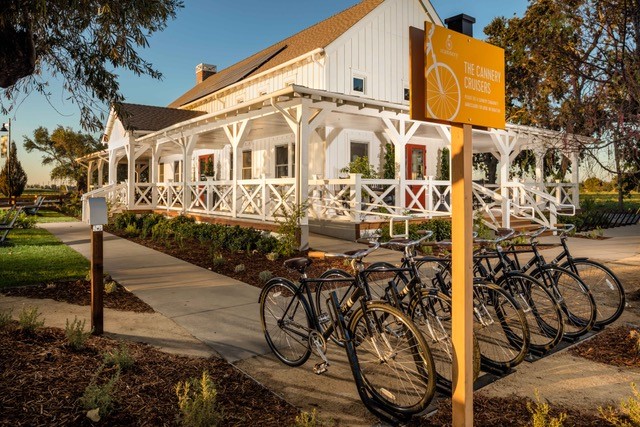Are you a subdivider or a community builder? This is the key question Tom Kopf, Director of Community Design for Matrix Design Group based in Denver, Colo., finds himself asking every day. “Community is about the connections made between people, and those connections are enhanced through the spirit of place,” Kopf explains. I had the opportunity to talk with him about creating the spirit of place last month at the International Builders Show in Orlando, Fla.
Does “community creation” apply only to large-scale, multi-phased, master-planned communities that span thousands of acres? Or can the same tenets of design apply to a 25-acre parcel and a few hundred homes? The answer is that it’s not the scale — what matters is employing smart use of community design to create engaging spaces for residents. That can only happen when you start with a deep understanding of your customers and think from their perspective, not from your perspective as the builder or developer.
Dating back to the 1980s, master-planned community amenities were often gold-plated, over-programmed clubhouses that suited the decade of the McMansions. And while home design has morphed and evolved since then, it has taken developers a while to give up the comfort of the formula that had become the “must haves”. But people have changed, and life is faster than ever. As a result, how home shoppers think about amenities has also changed.
This evening I observed a research seminar in a wealthy area of Southern California. As invited participants diligently rated their amenity preferences, giving the developer of a new master- planned community their input, every one of the questions they asked related to cost. Would the manicured open spaces cost more than native open space? What about the decomposed granite paths? Cheaper or more expensive than concrete? How much would the HOA dues increase if the developer built all that was being shown? Shoppers today are savvy and smart. No longer are they willing to accept monuments to the developer or fountains that do nothing but change color under lights at night.
What then defines great community amenities today? Kopf has written extensively about the five pillars that create places and opportunities for people to engage: Nature; Social; Energized; Simple; Right-sized. He ties these back to the belief that more than ever, people are seeking experiences, over stuff. Just look at the trends in retail: Access; Mobility (as and when I want it); and Integrated Experiences, which are driving the physical connection between space and products, such as the Roots Cabin Store in Vancouver that lets you design your own jacket. Aren’t community amenities really the “retail” opportunity in new homes and community development?
Your community should do three things, and do them better than anyone else:
- Demonstrate community before it’s on the ground. Show, don’t sell. Is the unique DNA of the place you are creating obvious in your amenity design? Can it only be here and nowhere else?
- Communicate a promise. What will it be like to live here? How will your amenities create valuable spaces and places?
- Create a memorable experience. At the end of a busy home shopping day how will your shoppers remember you over all the others they visited?
There are many great examples of amenities in both urban and suburban locations delivering on these items today. Here are just a few:
The Campout in Rancho Mission Viejo, San Juan Capistrano, California
This 15,000+ home master plan is adjacent to protected parkland and will include more than 21,000 acres of preserved natural space. At The Campout, residents can reserve one of twelve tents for overnight camping, s’more making and singalongs, right in their own community.

The Campout in Rancho Mission Viejo, San Juan Capistrano, California
Racetrack Park in Embrey Mill, Stafford Mill, Virginia
More than just a playground or a standard tot lot, how about a racetrack, complete with working traffic lights and kid and adult-sized bikes to race?

Racetrack Park in Embrey Mill, Stafford Mill, Virginia
The Cannery in Davis, California
The 1,644 square-foot Farm House at the heart of California’s first farm-to-table new home community, acts at the community’s Welcome Center, demonstrating a commitment to healthy and sustainable living.

The Cannery in Davis, California
Bayshore Park in Vancouver, British Columbia
Here a small patch of urban relief, very simply created by hay bales, dirt piles and buckets, is much more fun than playground equipment.

Bayshore Park in Vancouver, British Columbia
No matter what the scale, or how big or small the budget, the litmus test for any investment in community amenities should be, are you doing something worthwhile? Are you building something that will allow people the opportunity to engage with others and really experience your community?
—Teri Slavik-Tsuyuki, principal of tst ink, brings a customer-focused “how might we?” approach to creating communities and brands that connect and engage with how people want to live their lives

